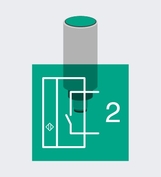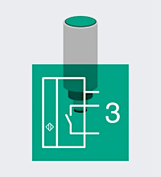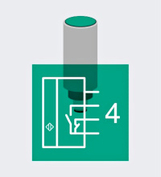Sensor Connection

Physically, the basic circuits of a sensor can fundamentally be constructed with two, three, or four wires. There is some basic information to be considered when connecting these sensors.
Basic Information: Connecting Multiple Sensors by Type of Output
Magnetic field sensors can be connected in parallel to other mechanical or electronic switches. The following must be observed.
Parallel Connection of Multiple Sensors
3-Wire Sensors
In principle, magnetic field sensors in three-wire technology can be connected in parallel to mechanical switches or other sensor outputs. One exception is sensors with push-pull output. This type of sensor cannot be connected in parallel, either to sensors or to mechanical switches.

Series Connection of Multiple Sensors
3-Wire Sensors
Due to the time delay before availability of the individual sensors, the reaction time will increase when 3-wire sensors are connected in series. In addition, the supply voltage of downstream sensors is always lower due to the voltage drop at the sensor output stages when 3-wire sensors are connected in series. The series connection of a single 3-wire sensor to one or more mechanical contacts is not critical.

Note: We recommend that magnetic field sensors are not connected in series. The interconnection of multiple sensors via logic modules is preferable in terms of predictable behavior and reliable function.
More Information

2-wire sensors do not have separate connections for the load current circuit and the voltage supply. 2-wire NAMUR sensors must be operated at an isolated switch amplifier designed for this purpose. Magnetically actuated Reed switches are electromechanical switches and are operated in series to the connected load. Reed switches can be connected in series or in parallel without any restrictions.

3-wire sensors are sourcing, type "PNP", or sinking, type "NPN", with separate connections for the power supply and for the output.

4-wire sensors are proximity sensors of sensor type "E" (~3-wire). They have an NO contact and an NC contact. The use of these sensors can keep the number of sensor versions to a minimum, therefore reducing storage costs. 4-wire sensors are often used to obtain additional information from the ever-different output states for diagnostic purposes, such as voltage drop, lead breakage, and short-circuit to ground.










 +91 80 4609 6000
+91 80 4609 6000